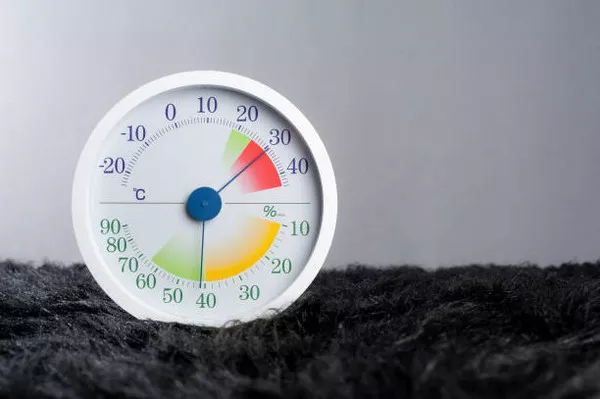Barometers, the instruments designed to measure atmospheric pressure, play a crucial role in meteorology, aviation, and even everyday weather forecasting. Over the years, various types of barometers have been developed, each with its own strengths and applications. In today’s technologically advanced world, which barometer reigns supreme as the most commonly used? Let’s delve into the different types, their uses, and which one dominates the field today.
Historical Context and Evolution
The history of barometers dates back to the 17th century when Evangelista Torricelli invented the mercury barometer. This simple yet effective device measured atmospheric pressure by balancing the weight of mercury against the pressure exerted by the atmosphere. Since then, several other types of barometers have been developed, including aneroid, electronic, and digital variants.
Types of Barometers
Mercury Barometers: Despite environmental concerns due to mercury’s toxicity, traditional mercury barometers are still used in some applications for their accuracy and reliability. They remain the standard against which other barometers are measured.
Aneroid Barometers: These devices use a flexible metal box (aneroid cell) instead of liquid to measure pressure changes. Aneroid barometers are compact, portable, and often used in homes, offices, and small weather stations.
Electronic Barometers: Utilizing electronic sensors to measure pressure, these barometers are popular for their precision and ability to integrate with digital weather stations and data loggers. They provide real-time data and are often part of automated weather monitoring systems.
Digital Barometers: These are advanced versions of electronic barometers that display pressure readings digitally. They offer ease of use and can store historical data, making them ideal for research and professional meteorological applications.
Applications Across Industries
Barometers are essential tools in various industries and applications:
Meteorology: Weather forecasting relies heavily on barometric readings to predict changes in weather patterns accurately.
Aviation: Pilots use barometers (often integrated into altimeters) to determine aircraft altitude and track atmospheric pressure changes during flight.
Marine Navigation: Barometers aid sailors in monitoring weather conditions at sea, helping them prepare for storms and other atmospheric disturbances.
Industrial Applications: Barometers are used in industrial settings to monitor air pressure in controlled environments such as manufacturing plants and clean rooms.
The Most Commonly Used Barometer Today
In the contemporary world, electronic and digital barometers have gained significant traction due to their practicality and integration capabilities. Here’s why they dominate:
Accuracy and Precision: Electronic and digital barometers offer precise measurements, often with high resolution and accuracy, crucial for scientific research and weather prediction.
Ease of Use: Unlike mercury barometers that require careful handling and calibration, electronic and digital variants are user-friendly and require minimal maintenance.
Integration with Technology: These barometers can interface with computers, smartphones, and other devices, allowing for real-time data transmission and remote monitoring. This capability is invaluable in modern meteorology and industrial applications.
Safety and Environmental Concerns: The shift away from mercury barometers towards electronic alternatives addresses safety and environmental concerns associated with mercury exposure and disposal.
Cost-Effectiveness: While initial costs may vary, electronic and digital barometers often provide better long-term value due to lower maintenance costs and longer operational lifespans.
Case Studies and Examples
National Weather Services: Meteorological agencies worldwide use electronic and digital barometers to monitor weather patterns and issue timely forecasts.
Research Institutions: Scientific research relies on accurate atmospheric data, making digital barometers indispensable tools in climate studies and environmental monitoring.
Commercial Applications: From agriculture to energy production, industries benefit from real-time pressure data to optimize operations and ensure safety.
Future Trends and Innovations
Looking ahead, advancements in sensor technology, artificial intelligence, and Internet of Things (IoT) connectivity promise to further revolutionize barometric measurements. Future barometers may integrate predictive analytics and machine learning algorithms to enhance weather forecasting accuracy and automate decision-making processes.
See Also HOW BAROMETER WORKS IN WATCH?
Conclusion
In conclusion, while traditional mercury barometers laid the foundation for measuring atmospheric pressure, electronic and digital barometers have emerged as the most commonly used types today. Their accuracy, ease of use, and integration capabilities make them indispensable in meteorology, aviation, marine navigation, and various industrial applications. As technology continues to evolve, these barometers will likely play an increasingly pivotal role in monitoring and understanding our ever-changing weather and atmospheric conditions.
Understanding the evolution and current state of barometers underscores their critical importance in modern society, where accurate weather prediction and environmental monitoring are essential for sustainable development and safety. As we continue to innovate and improve these instruments, the future of barometric measurement holds exciting possibilities for advancing scientific research and enhancing our understanding of the natural world.

